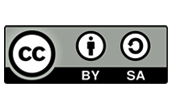Pengaruh Motivasi Wisatawan Lokal Terhadap Keputusan Berkunjung Ke Taman Kota Di Kota Tangerang Selatan
Abstract
One of the famous, and still developing, attractions in South Tangerang are Taman Kota. It is a city-park located at the center of the city, there is a red bridge inside which is very popular among the people of South Tangerang. There is also the tributary of Cisadane and lots of bushy trees, which provide natural shades. There is a decrease in visitors of Taman Kota from 2011 to 2014 because there are a lot of tourism attraction competitors in South Tangerang. One of the efforts done by Taman Kota to increase the decision to visit is by improving the management understanding of tourist motivation. The independent variable in this research is tourist motivation (X) which consists of some sub variables, which are nature, value for money, and physical activities. The dependent variable is the decision to visit (Y) which consists of product selection, brand selection, line of selection, time of visit selection and the frequency attending the attraction. The research types used are descriptive and verification. The method used was an explanatory survey. The samples of this research are 100 respondents, which were drawn by using systematic random sampling. Hypothesis testing data analysis technique used was multiple regressions. Tourists’ responses regarding to the motivation in Taman Kota were considered high. The result from this research shows that the most influential sub variable is nature, and the less is on the physical activities. Tourists’ responses to the decision to visit were also considered high. Line of the selection indicators got the highest score; meanwhile, the time of visit selection got the lowest score. Based on the testing through SPSS 20 for windows, there is a simultaneous and partial influence between tourist motivation and the decision to visit. The recommendation to the management of Taman Kota to increase the decision to visit is by optimizing the object as tourism appeal for physical activities.
Full Text:
PDFDOI: https://doi.org/10.17509/thej.v7i1.6841
DOI (PDF): https://doi.org/10.17509/thej.v7i1.6841.g4652
Refbacks
- There are currently no refbacks.
This work is licensed under a Creative Commons Attribution-ShareAlike 4.0 International License.








